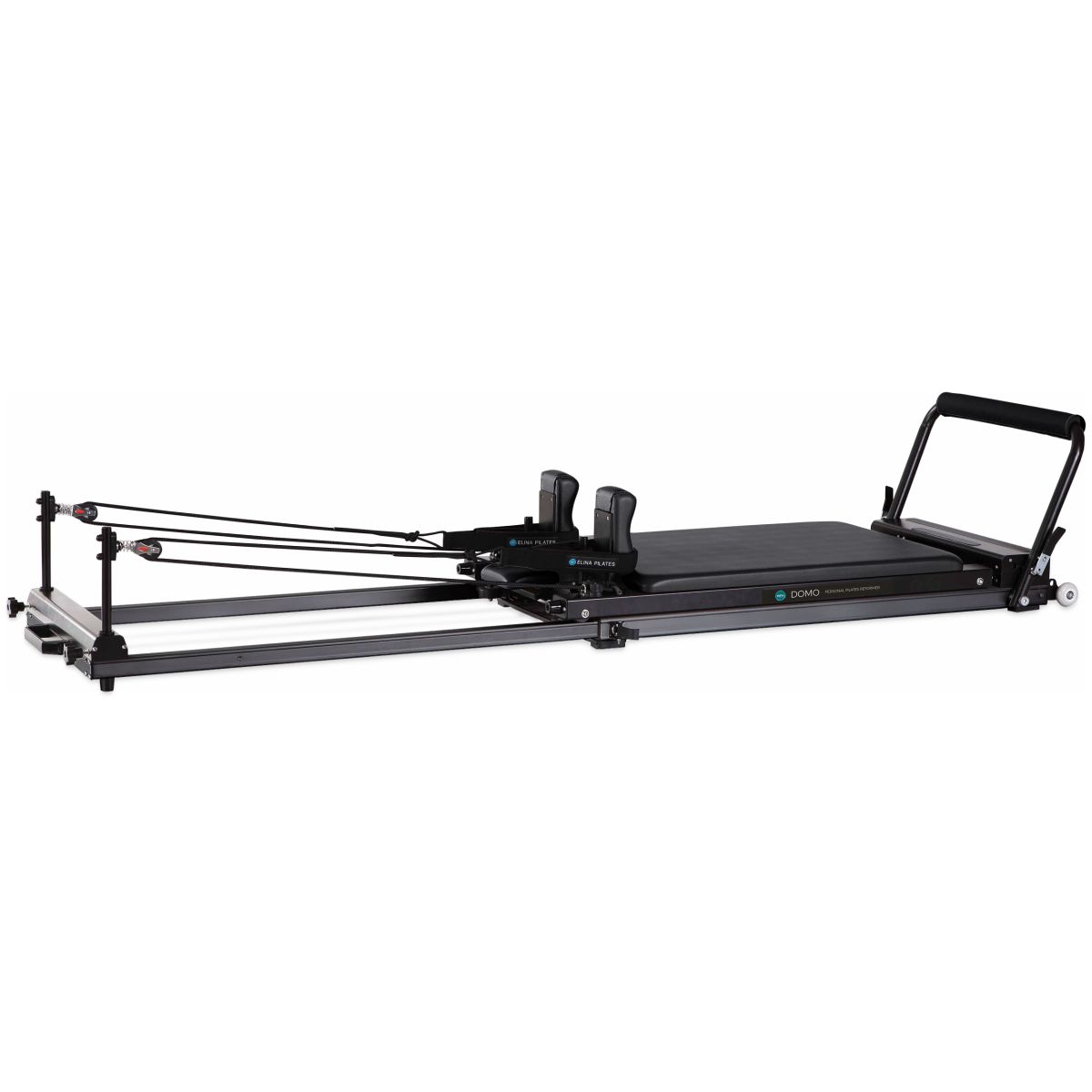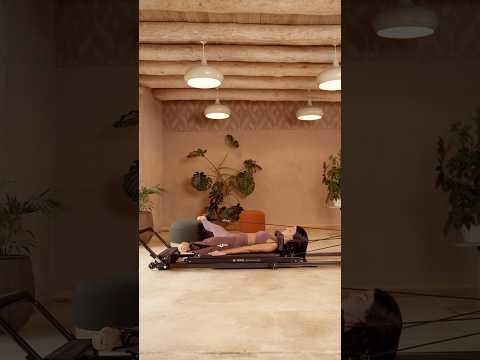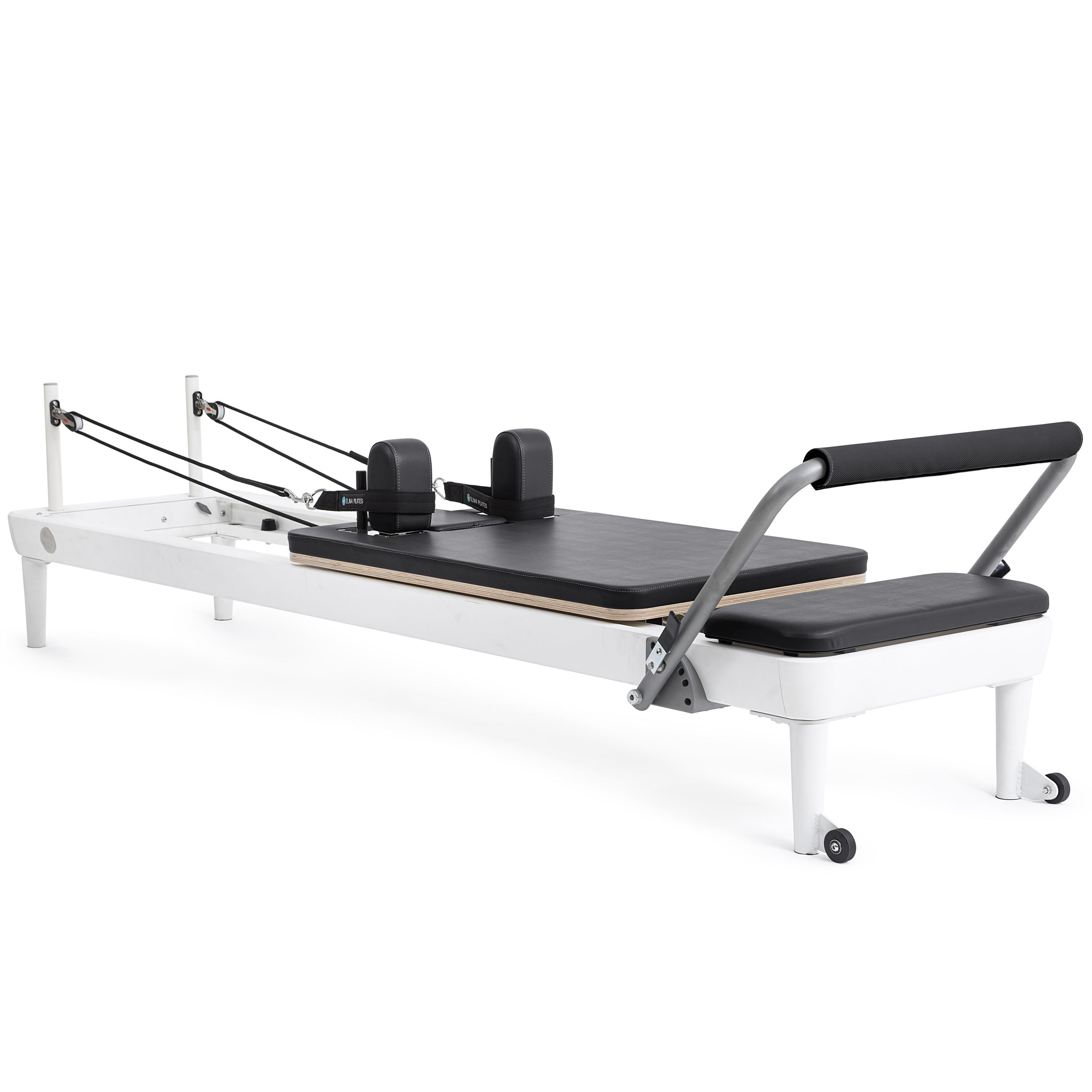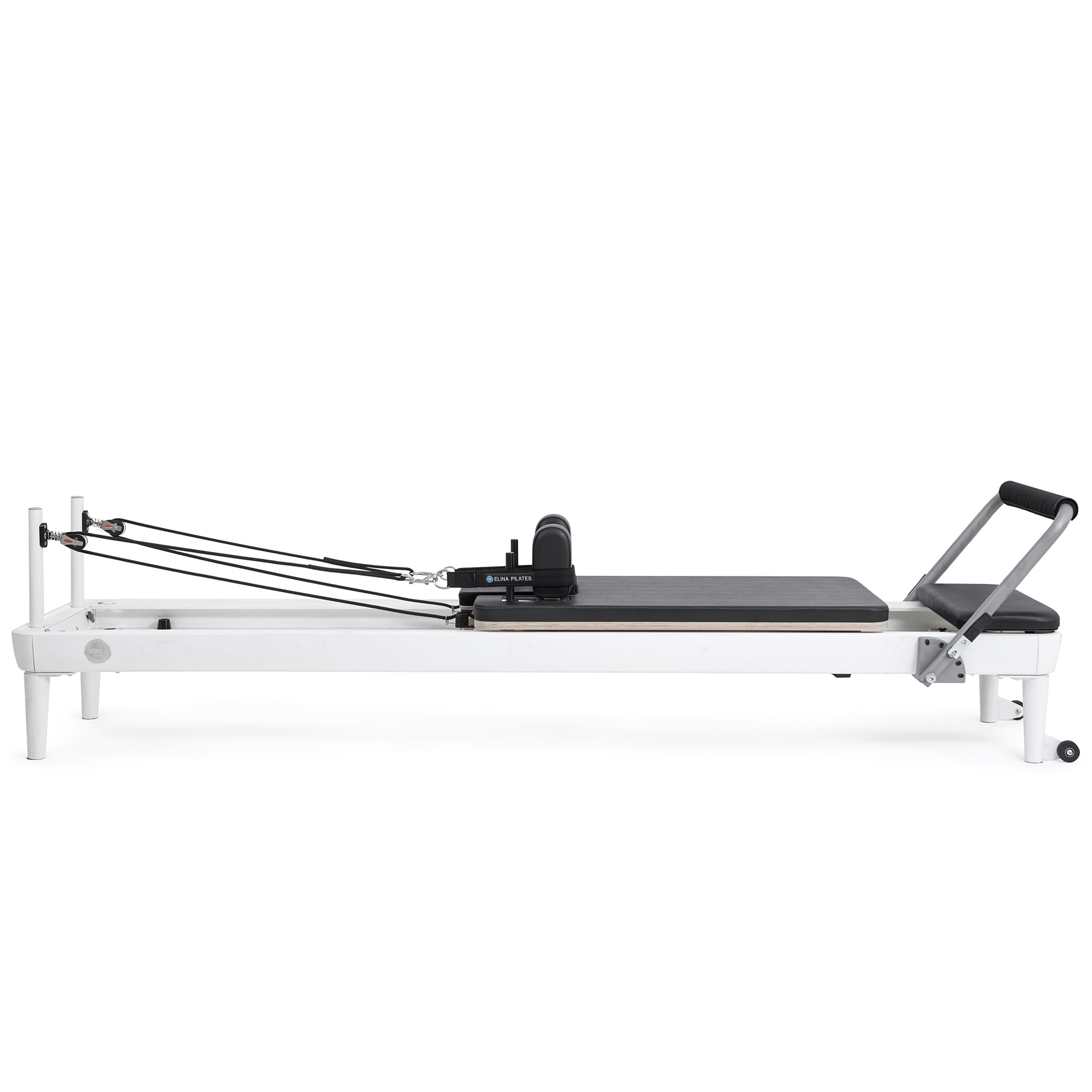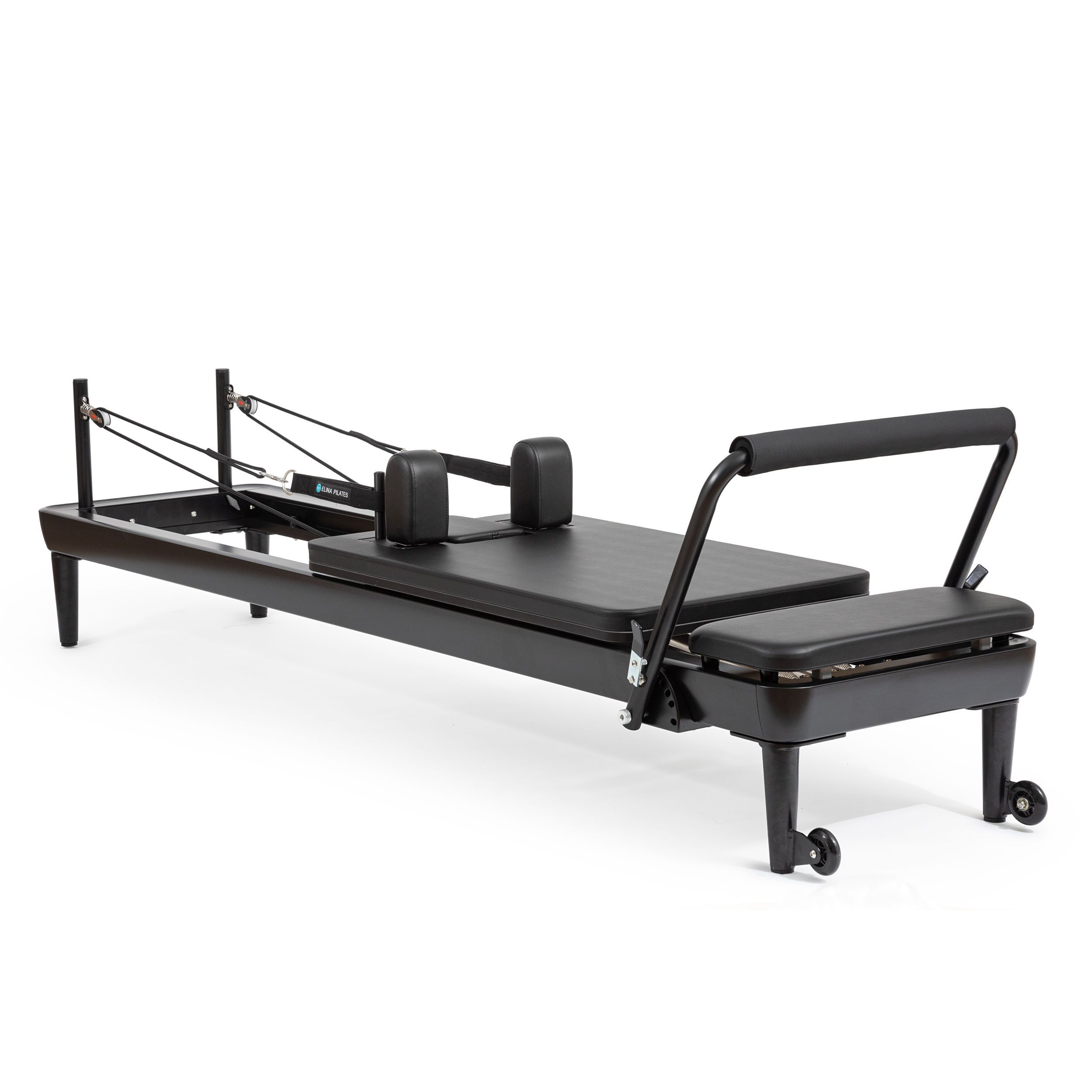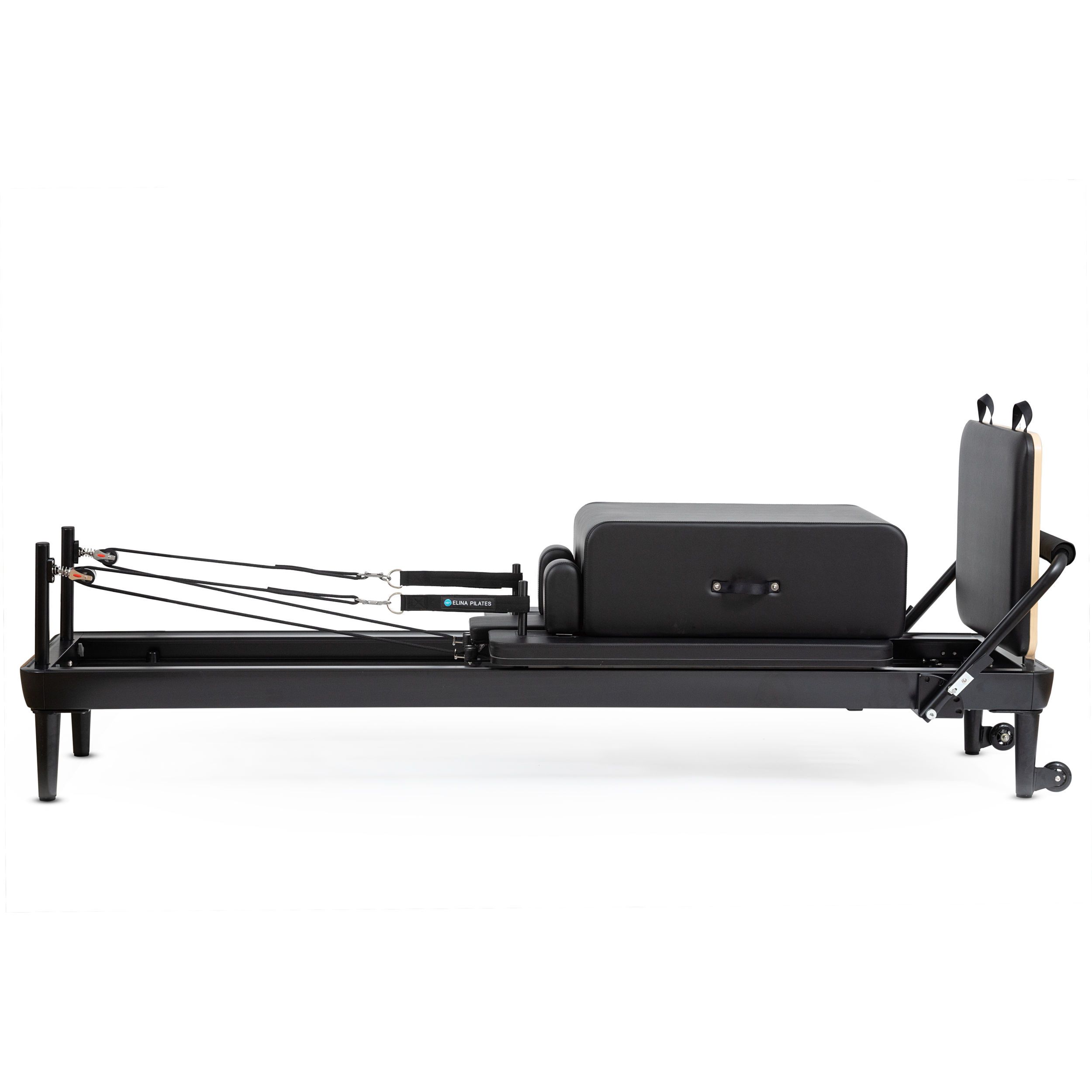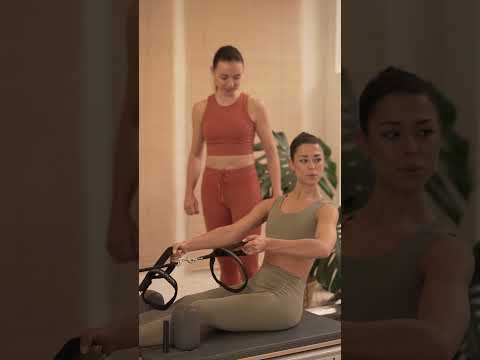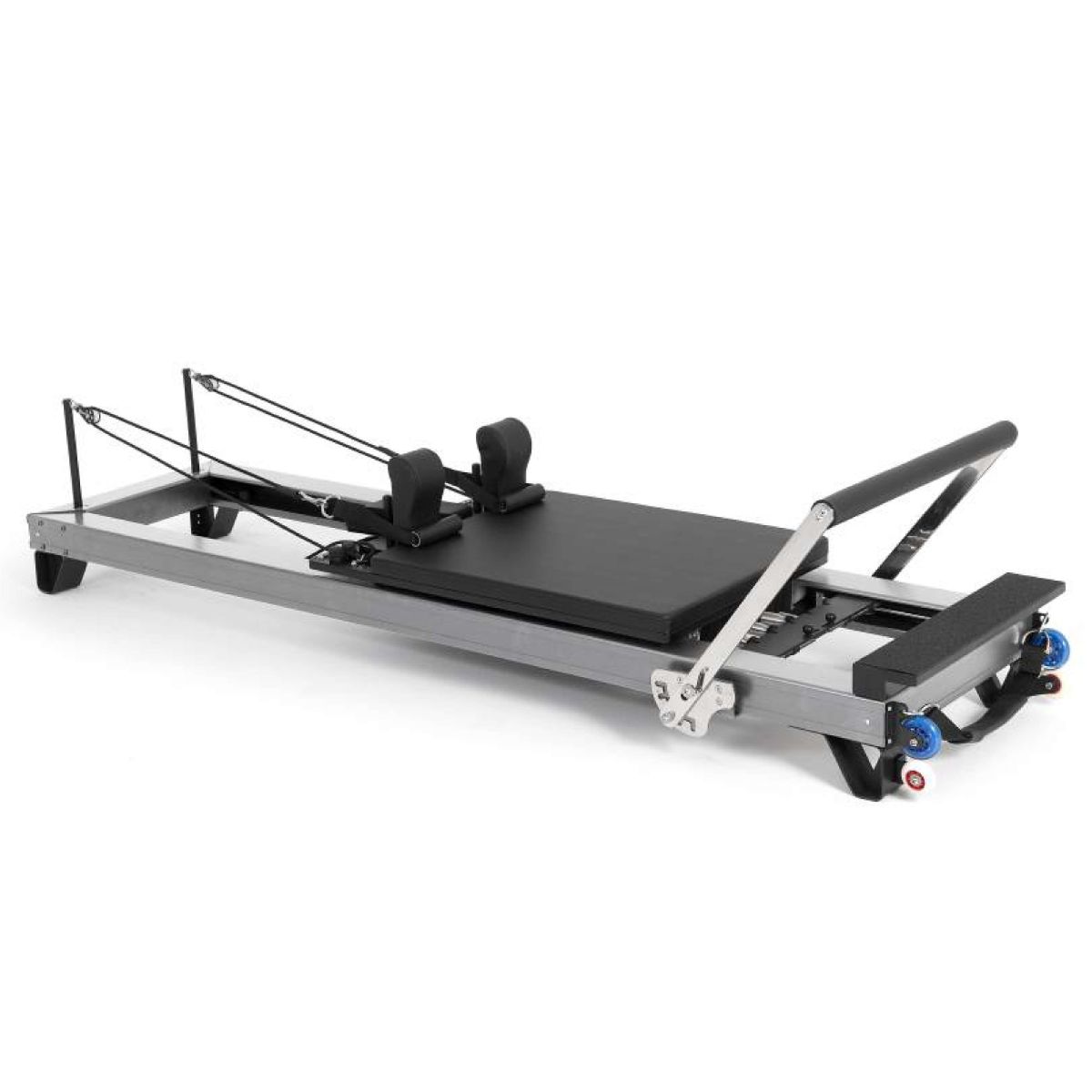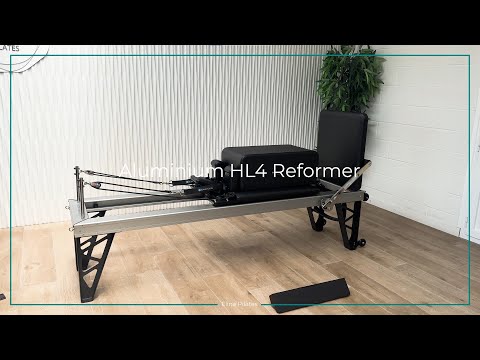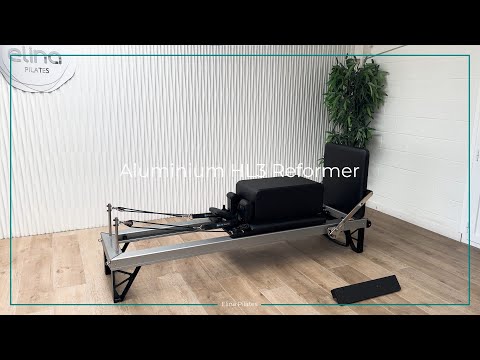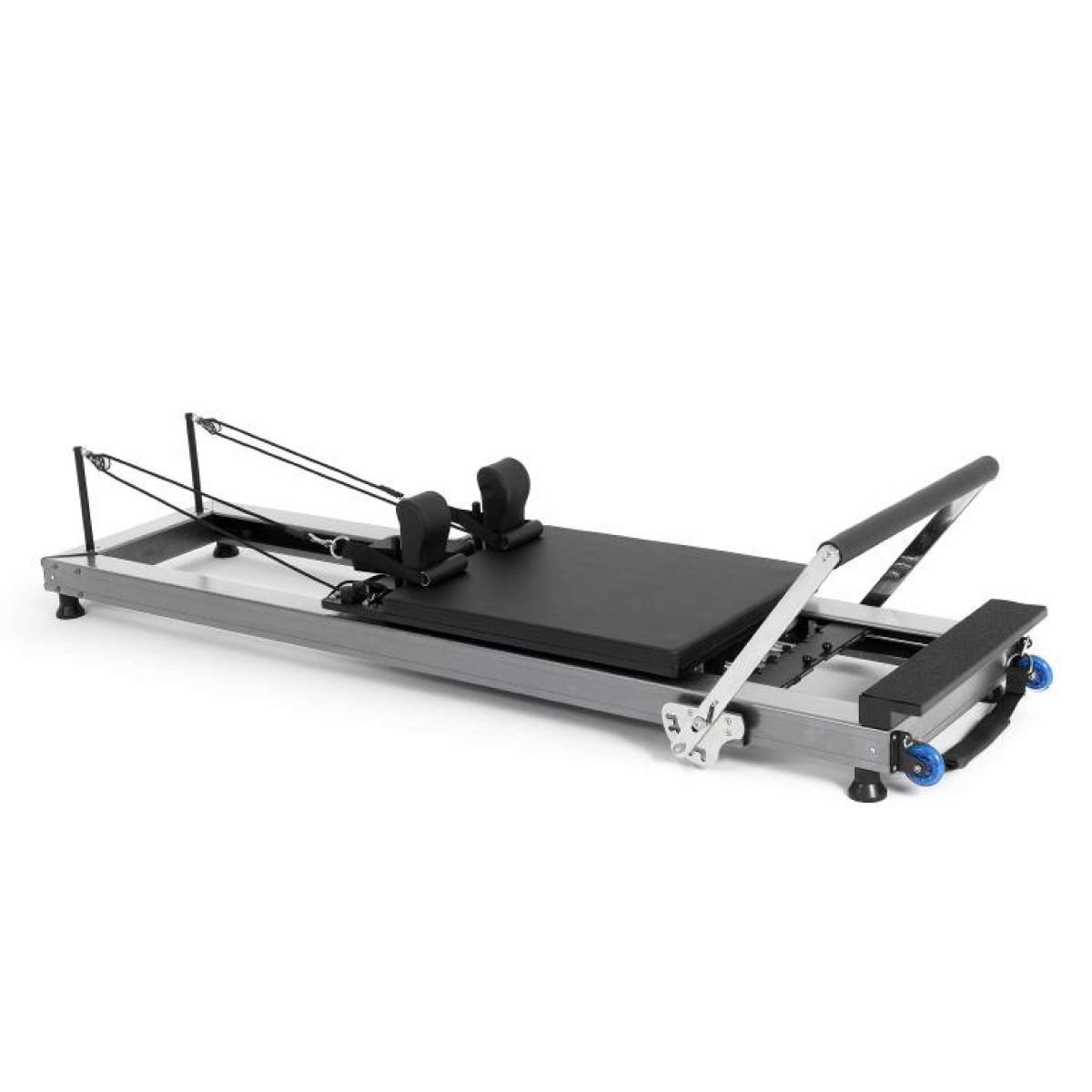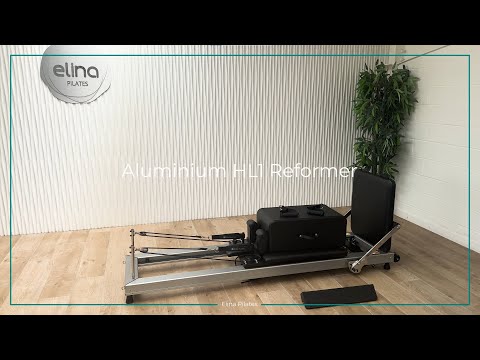Folding Pilates Reformers
Folding Pilates reformers may seem like a convenient option, especially for those with limited
Limitless Variation
Premium Reformers
Affordable Price
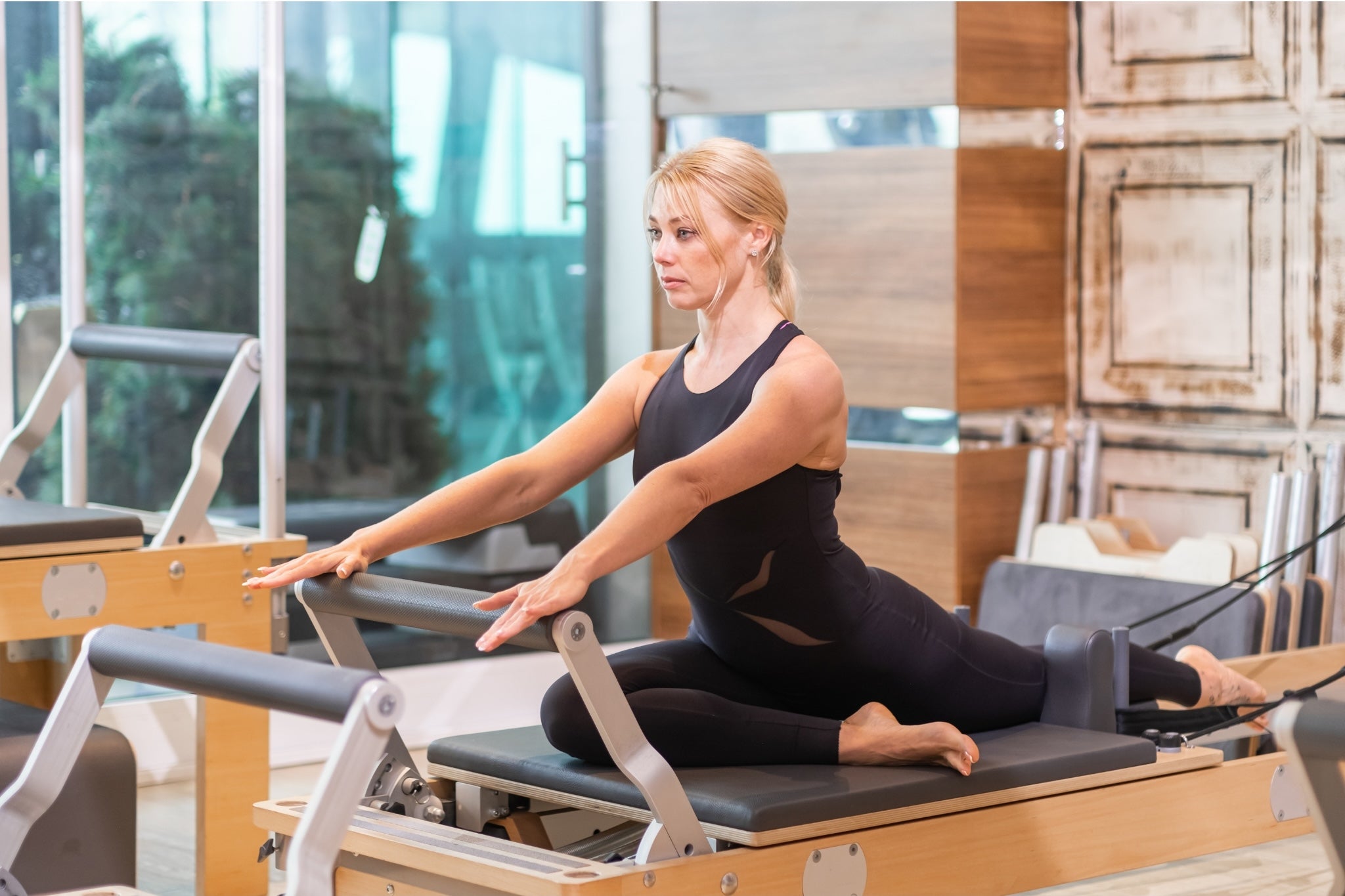
Structural Weakness and Stability Concerns
One of the main drawbacks of folding reformers is that the track must be split into two sections in order to allow the frame to fold. This results in a joint where the carriage wheels roll over, which can create noticeable vibrations with each movement. Unlike solid-frame reformers, which offer a seamless glide, folding models often lack the same smooth motion, which can impact your workout experience and even lead to increased wear on the carriage wheels over time.
Additionally, since the frame is divided into two pieces, it will never be as structurally strong as a standard reformer. Over time, the folding mechanism and joints may loosen, reducing the stability of the equipment. It is essential to check the warranty provided by manufacturers, as folding reformers tend to have shorter coverage compared to solid-frame models.
Portability vs. Practicality
Although folding reformers are marketed as a space-saving and portable solution, they remain large and heavy pieces of equipment. The process of folding and unfolding requires significant effort, strength, and time. It is not as simple as just folding it away after each session—setting it up involves aligning and tightening the frame, adjusting the ropes and pulleys, and ensuring proper positioning.
Many users find that, despite the folding feature, they tend to leave their reformer unfolded most of the time because of the effort required to set it up. If you have enough space, you may be better off considering an alternative that does not require frequent assembly and disassembly.
Durability and Longevity
Folding reformers tend to experience more wear and tear than their solid-frame counterparts. The constant folding and unfolding, combined with the strain on the joints, can lead to quicker deterioration of key components. This is one reason why many leading Pilates brands do not include folding reformers in their product range.
If durability is a priority, investing in a non-folding reformer may be a better long-term choice. Many high-quality reformers are designed to be stored upright, allowing you to save space without compromising on stability and performance.
Alternative Space-Saving Solutions
For those who need a more compact Pilates reformer without the downsides of a folding mechanism, there are other options available:
- Extendable Reformers: The Domo has an extendable design that provides portability without compromising on smooth carriage movement.
- Reformers with Upright Storage: Many aluminium models, including the Nubium, can be stored vertically to save space.
- Stackable Reformers: Some models can be stacked for efficient storage, making them a practical choice for studios with multiple reformers.
Final Thoughts
While folding reformers may seem like a convenient option, they come with notable drawbacks in terms of stability, durability, and ease of use. If space is a concern, alternatives such as telescopic models like the Domo or upright storage reformers like the Nubium provide better long-term solutions. Before purchasing a reformer, consider how often you will need to set it up and whether a more robust, non-folding model might better suit your needs.

